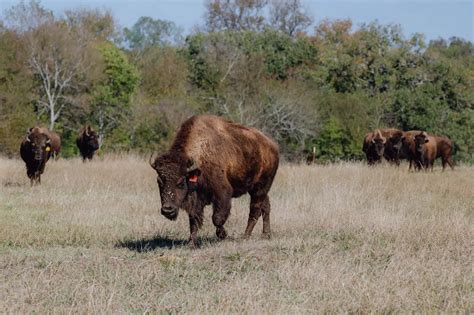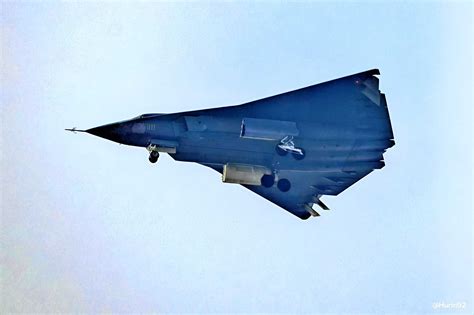
The potential reintroduction of wolves to Colorado after a century-long absence is under consideration by state officials, marking a significant step in a debate that balances ecological restoration with concerns from ranchers and local communities.
Colorado Parks and Wildlife (CPW) is currently evaluating the feasibility and potential impacts of reintroducing gray wolves to the state, a process driven by a 2020 ballot initiative that mandated the reintroduction by the end of 2023. The initiative passed by a narrow margin, highlighting the deeply divided opinions on the matter. The central question revolves around whether bringing back this apex predator can restore ecological balance or if it will lead to unacceptable risks for livestock and livelihoods.
“We are committed to developing a comprehensive plan that addresses the biological needs of wolves while also considering the concerns of local communities,” stated a CPW spokesperson.
The reintroduction plan aims to establish a self-sustaining wolf population in designated areas west of the Continental Divide. Proponents of the reintroduction argue that wolves, as apex predators, can play a crucial role in regulating elk and deer populations, preventing overgrazing, and promoting biodiversity. They point to successful wolf reintroduction programs in other states, such as Yellowstone National Park, where the return of wolves has led to significant ecological improvements.
However, ranchers and rural communities have voiced strong opposition, citing concerns about livestock depredation and potential economic losses. They argue that wolves pose a direct threat to their livelihoods and that existing compensation programs may not fully cover the costs associated with wolf predation. Concerns also extend to the safety of pets and the potential impact on hunting opportunities.
The CPW is conducting extensive research, public outreach, and stakeholder engagement to inform the reintroduction plan. This includes analyzing wolf habitat suitability, assessing potential impacts on livestock and wildlife populations, and developing strategies for conflict mitigation and compensation. The agency is also working closely with other state and federal agencies, as well as tribal governments, to ensure a coordinated and effective approach.
The decision to reintroduce wolves in Colorado represents a complex challenge with far-reaching ecological, economic, and social implications. As the state moves closer to a final decision, the debate is likely to intensify, underscoring the need for careful consideration and a balanced approach that addresses the diverse perspectives of all stakeholders.
Ecological Considerations
The reintroduction of wolves is fundamentally an ecological issue, with potential ramifications rippling through the entire ecosystem. Proponents highlight the concept of trophic cascades, where the presence or absence of a top predator can significantly alter the structure and function of the food web.
In the absence of wolves, elk and deer populations in Colorado have grown substantially in some areas, leading to overgrazing and habitat degradation. This can negatively impact plant communities, water quality, and the overall health of the ecosystem. By preying on elk and deer, wolves can help regulate their populations and prevent overgrazing, allowing vegetation to recover and creating a more diverse and resilient landscape.
Studies from Yellowstone National Park, where wolves were reintroduced in 1995, have demonstrated the positive effects of wolf predation on elk populations and vegetation. The return of wolves led to a decline in elk numbers and a change in their behavior, with elk becoming more vigilant and avoiding certain areas. This allowed vegetation, such as aspen and willow, to recover, which in turn benefited other species, including beavers, songbirds, and fish.
Furthermore, wolves can influence the health and genetic diversity of prey populations by selectively preying on weaker or diseased individuals. This can help to improve the overall health and resilience of the prey population, reducing the risk of disease outbreaks and genetic bottlenecks.
However, the ecological effects of wolf reintroduction are not always straightforward. There are concerns that wolves could also prey on other species, such as bighorn sheep or pronghorn, which are already facing challenges due to habitat loss and other factors. It is also important to consider the potential for wolves to hybridize with coyotes, which could have unintended consequences for the genetic integrity of both species.
The CPW is conducting extensive research to assess the potential ecological impacts of wolf reintroduction in Colorado. This includes analyzing wolf habitat suitability, assessing the potential for wolf predation on different prey species, and modeling the potential effects of wolves on vegetation and other ecosystem components.
Economic Considerations
The economic implications of wolf reintroduction are a major point of contention, particularly for ranchers and rural communities. Ranchers worry about the potential for livestock depredation and the associated economic losses. Wolves can prey on cattle, sheep, and other livestock, resulting in direct losses for ranchers.
The cost of livestock depredation can vary depending on the size of the wolf population, the availability of natural prey, and the effectiveness of conflict mitigation measures. Studies from other states have shown that livestock depredation by wolves can be a significant economic burden for some ranchers, particularly those who operate in areas with high wolf densities.
In addition to direct losses from livestock depredation, ranchers may also incur indirect costs, such as increased monitoring and management expenses, reduced livestock productivity, and decreased property values. The psychological stress of dealing with wolf predation can also take a toll on ranchers and their families.
Proponents of wolf reintroduction argue that the economic benefits of wolves can outweigh the costs. Wolves can attract tourists and generate revenue for local communities through wildlife viewing and hunting opportunities. They can also help to reduce crop damage by controlling elk and deer populations.
The CPW is developing a compensation program to reimburse ranchers for livestock losses caused by wolves. The program will provide financial assistance to ranchers who implement proactive measures to prevent wolf depredation, such as using guard dogs or installing fencing.
The economic impact of wolf reintroduction is a complex issue that requires careful consideration. It is important to weigh the potential costs to ranchers and rural communities against the potential benefits for tourism, recreation, and ecosystem services.
Social Considerations
The social dimensions of wolf reintroduction are just as critical as the ecological and economic aspects. The issue is deeply intertwined with people’s values, beliefs, and perceptions of wildlife.
For some people, wolves represent a symbol of wilderness and ecological integrity. They see wolf reintroduction as a moral imperative, a way to restore a missing piece of the natural world and to redress past wrongs. They may also value the aesthetic and recreational opportunities that wolves can provide, such as wildlife viewing and photography.
For others, wolves represent a threat to their livelihoods, their safety, and their way of life. They may view wolves as dangerous predators that pose a risk to livestock, pets, and even humans. They may also feel that wolf reintroduction is an imposition by urban dwellers who do not understand the challenges of living in rural areas.
These differing perspectives have led to intense polarization and conflict over wolf reintroduction. It is essential to address these social concerns and to find ways to bridge the divide between different viewpoints.
The CPW is conducting extensive public outreach and stakeholder engagement to gather input from diverse groups and to build consensus around the reintroduction plan. This includes holding public meetings, conducting surveys, and forming advisory committees.
The success of wolf reintroduction will depend on the ability to address the social concerns of all stakeholders and to create a sense of shared ownership and responsibility for the program.
The Colorado Ballot Initiative
The 2020 ballot initiative that mandated wolf reintroduction in Colorado was a landmark event, reflecting the growing public support for wildlife conservation and ecological restoration. The initiative, known as Proposition 114, required the CPW to develop and implement a plan to reintroduce gray wolves into designated areas west of the Continental Divide by the end of 2023.
The initiative was driven by a coalition of environmental groups and wildlife advocates who argued that wolf reintroduction was necessary to restore ecological balance and to promote biodiversity in Colorado. They pointed to the successful wolf reintroduction programs in other states, such as Yellowstone National Park, as evidence that wolves can have positive effects on ecosystems.
The initiative was opposed by a coalition of ranchers, farmers, and rural communities who argued that wolf reintroduction would pose a threat to their livelihoods and their safety. They expressed concerns about livestock depredation, economic losses, and the potential for conflicts between wolves and humans.
The ballot initiative passed by a narrow margin, with 50.9% of voters in favor and 49.1% opposed. The close vote highlighted the deeply divided opinions on the issue and underscored the need for careful consideration and a balanced approach.
The ballot initiative also established a process for the CPW to develop and implement the reintroduction plan. The CPW is required to consult with stakeholders, conduct scientific research, and develop strategies for conflict mitigation and compensation.
The passage of Proposition 114 marked a significant turning point in the history of wolf management in Colorado. It signaled a shift towards a more proactive and ecologically based approach to wildlife conservation.
Conflict Mitigation and Compensation
Conflict mitigation and compensation are essential components of any wolf reintroduction program. These measures are designed to minimize the potential for conflicts between wolves and humans, and to provide financial assistance to those who suffer losses as a result of wolf predation.
Conflict mitigation strategies can include a variety of techniques, such as:
- Non-lethal deterrents: These include fladry (flags attached to fencing), strobe lights, loud noises, and guard animals.
- Livestock management practices: These include grazing strategies that minimize the risk of wolf depredation, such as avoiding grazing in areas with high wolf densities or using rotational grazing systems.
- Public education and outreach: This includes educating the public about wolf behavior, safety precautions, and the importance of responsible wildlife viewing.
Compensation programs provide financial assistance to ranchers who suffer livestock losses caused by wolves. These programs typically reimburse ranchers for the fair market value of the livestock that are killed or injured by wolves.
The CPW is developing a comprehensive conflict mitigation and compensation program as part of its wolf reintroduction plan. The program will provide financial assistance to ranchers who implement proactive measures to prevent wolf depredation, such as using guard dogs or installing fencing. The program will also reimburse ranchers for livestock losses caused by wolves, provided that certain conditions are met.
The effectiveness of conflict mitigation and compensation programs is crucial for the success of wolf reintroduction. These measures can help to reduce the negative impacts of wolves on ranchers and rural communities, and to build support for the program.
The Role of Science
Scientific research plays a crucial role in informing wolf reintroduction decisions. Scientists conduct research to assess wolf habitat suitability, to model the potential ecological and economic impacts of wolf reintroduction, and to evaluate the effectiveness of conflict mitigation strategies.
The CPW is conducting extensive scientific research as part of its wolf reintroduction planning process. This includes:
- Habitat suitability analysis: This involves assessing the availability of suitable habitat for wolves in different areas of Colorado.
- Population modeling: This involves using mathematical models to predict the potential size and distribution of the wolf population after reintroduction.
- Prey availability assessment: This involves assessing the abundance and distribution of prey species, such as elk and deer, in different areas of Colorado.
- Livestock depredation risk assessment: This involves identifying areas where livestock depredation is likely to be a significant issue.
- Conflict mitigation strategy evaluation: This involves evaluating the effectiveness of different conflict mitigation strategies in reducing livestock depredation.
The CPW is also working with other state and federal agencies, as well as universities and research institutions, to conduct scientific research on wolf reintroduction. The agency is committed to using the best available science to inform its decisions and to ensure that the reintroduction plan is based on sound ecological principles.
The Importance of Collaboration
Collaboration among different stakeholders is essential for the success of wolf reintroduction. This includes collaboration among state and federal agencies, tribal governments, ranchers, environmental groups, and other interested parties.
The CPW is committed to working collaboratively with all stakeholders to develop and implement the wolf reintroduction plan. The agency is conducting extensive public outreach and stakeholder engagement to gather input from diverse groups and to build consensus around the plan.
The CPW is also working closely with other state and federal agencies, such as the U.S. Fish and Wildlife Service and the U.S. Forest Service, to coordinate wolf management efforts. The agency is also consulting with tribal governments to ensure that their interests are considered.
The success of wolf reintroduction will depend on the ability of different stakeholders to work together to find common ground and to develop solutions that address the concerns of all parties.
Looking Ahead
The future of wolf reintroduction in Colorado remains uncertain. The CPW is currently developing a draft reintroduction plan, which will be released for public comment. The agency will then consider the public comments and revise the plan as necessary before submitting it to the Colorado Parks and Wildlife Commission for approval.
The decision to reintroduce wolves in Colorado will have far-reaching ecological, economic, and social implications. It is essential that the decision is based on sound science, careful consideration of all stakeholder interests, and a commitment to collaboration.
As the state moves closer to a final decision, the debate is likely to intensify. However, by working together and by focusing on the common goals of ecological restoration, economic sustainability, and social well-being, it may be possible to find a path forward that benefits both wolves and the people of Colorado.
Frequently Asked Questions (FAQs)
1. Why is Colorado considering reintroducing wolves after a century-long absence?
The reintroduction is primarily driven by a 2020 ballot initiative, Proposition 114, which mandated the Colorado Parks and Wildlife (CPW) to reintroduce gray wolves west of the Continental Divide by the end of 2023. Proponents argue that wolves are essential apex predators that can help restore ecological balance by controlling elk and deer populations, preventing overgrazing, and promoting biodiversity. Successful wolf reintroduction programs in other states, like Yellowstone National Park, serve as a model.
2. What are the main concerns of ranchers and rural communities regarding wolf reintroduction?
Ranchers and rural communities are primarily concerned about livestock depredation, leading to economic losses. They fear that wolves will prey on cattle and sheep, impacting their livelihoods. They also worry about the effectiveness of compensation programs in covering these losses. Additionally, concerns extend to the safety of pets and the potential negative impact on hunting opportunities for deer and elk. The psychological stress of dealing with potential wolf encounters is also a significant concern.
3. What measures are being taken to mitigate potential conflicts between wolves and humans, particularly regarding livestock?
The CPW is developing a comprehensive conflict mitigation program, which includes non-lethal deterrents such as fladry (flags on fences), strobe lights, and noisemakers. Livestock management practices, like avoiding grazing in high-wolf-density areas or using rotational grazing, are also being considered. The CPW is also implementing a compensation program to reimburse ranchers for livestock losses caused by wolves. This program may provide financial assistance for proactive measures to prevent depredation, like guard dogs or fencing.
4. What scientific research is being conducted to inform the wolf reintroduction plan?
The CPW is conducting extensive scientific research to assess wolf habitat suitability, model potential ecological and economic impacts, and evaluate the effectiveness of conflict mitigation strategies. This includes analyzing prey availability (elk, deer), assessing livestock depredation risk in different areas, and modeling the potential size and distribution of the wolf population after reintroduction. The CPW is also collaborating with other agencies and research institutions to ensure decisions are based on the best available science.
5. What is the timeline for the wolf reintroduction, and how can the public provide input?
The 2020 ballot initiative mandated reintroduction by the end of 2023. The CPW is currently developing a draft reintroduction plan. This draft plan will be released for public comment, and the CPW will revise the plan based on the feedback received. Public meetings, surveys, and advisory committees are being used to gather input from diverse groups. The final plan will then be submitted to the Colorado Parks and Wildlife Commission for approval. The public can stay informed and provide input through the CPW website and public engagement events.









